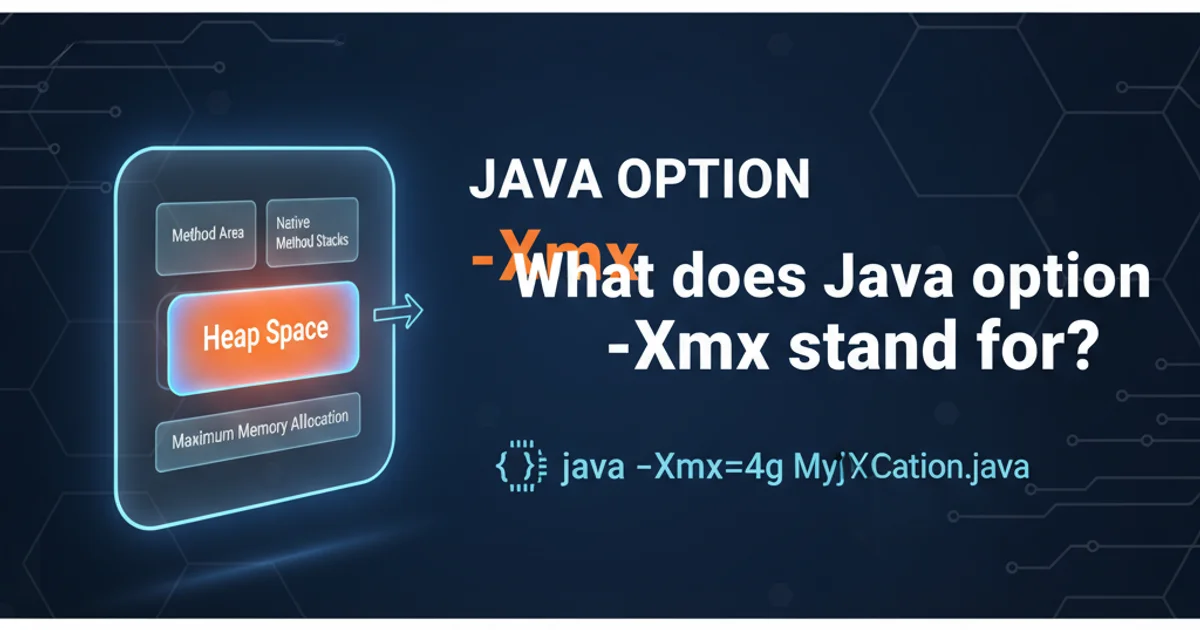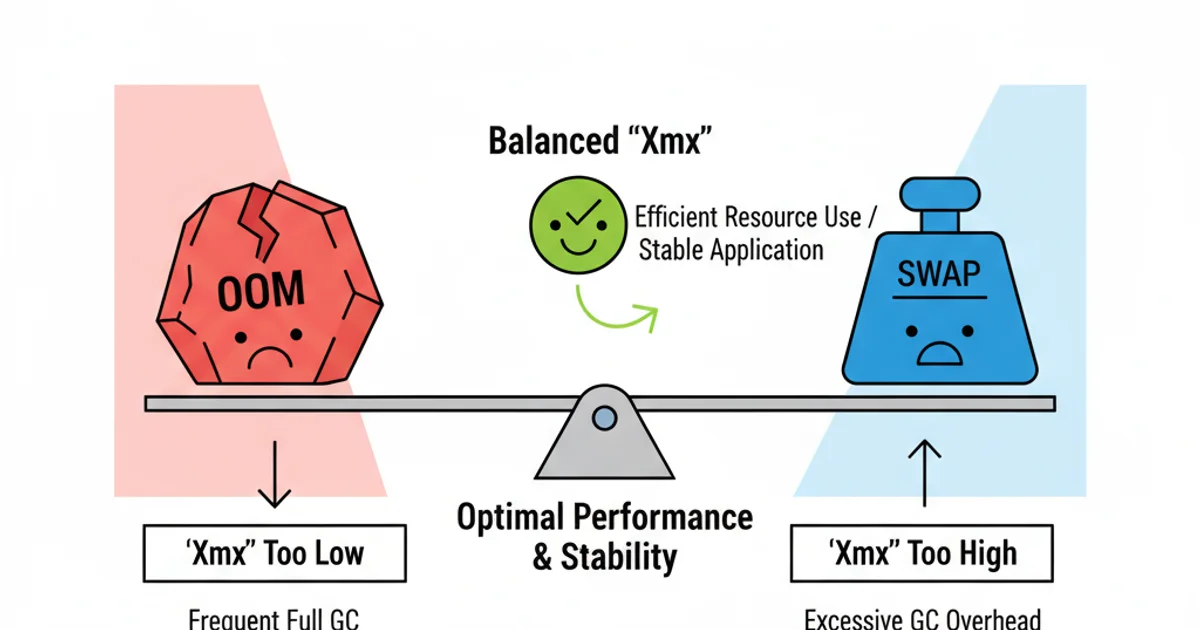What does Java option -Xmx stand for?
Categories:
Understanding Java's -Xmx Option: A Deep Dive into Heap Memory

Explore the critical role of the -Xmx Java option in controlling the maximum heap memory allocation for your applications, and learn how to optimize its usage for performance and stability.
When running Java applications, managing memory is crucial for performance and stability. One of the most frequently encountered and often misunderstood command-line options is -Xmx. This article will demystify -Xmx, explain its purpose, and provide practical guidance on how to use it effectively.
What Does -Xmx Stand For?
The -Xmx option in Java stands for 'maximum Java heap size'. It is a non-standard (hence the 'X' prefix) JVM option that allows you to specify the maximum amount of memory that the Java Virtual Machine (JVM) will attempt to allocate for the heap. The heap is the runtime data area from which memory for all class instances and arrays is allocated. It's where your application's objects live.
If your application tries to allocate more memory than the -Xmx limit, it will result in an OutOfMemoryError. This option is fundamental for tuning Java applications, especially those dealing with large datasets or high concurrency.
Heap Memory Allocation Process
To better understand -Xmx, it's helpful to visualize how the JVM manages memory. The heap is just one part of the JVM's memory model, but it's the most significant for application data. When you start a Java application, the JVM allocates an initial heap size (controlled by -Xms) and can grow up to the maximum size specified by -Xmx.
flowchart TD
A[Java Application Start] --> B{JVM Initialization}
B --> C[Allocate Initial Heap (-Xms)]
C --> D{Application Runs}
D --> E{Object Allocation Request}
E --> F{Is Heap Available?}
F -- Yes --> G[Allocate Object]
F -- No --> H{Is Heap < -Xmx?}
H -- Yes --> I[Expand Heap]
I --> G
H -- No --> J[OutOfMemoryError]
G --> DJVM Heap Memory Allocation Flow
Setting the -Xmx Value
The -Xmx option takes a value that specifies the size of the memory. You can use various units:
korKfor kilobytesmorMfor megabytesgorGfor gigabytes
If no unit is specified, the default is bytes (though this is rarely used for -Xmx).
java -Xmx512m -jar YourApplication.jar
java -Xmx2g -jar AnotherApplication.jar
java -Xmx1024k -jar SmallApp.jar
Examples of setting -Xmx with different units.
-Xms (initial heap size) and -Xmx (maximum heap size) to the same value in production environments. This prevents the JVM from dynamically resizing the heap, which can cause performance overhead due to garbage collection pauses and memory reallocations.Impact on Performance and Stability
Setting -Xmx correctly has a significant impact:
- Too Low: If
-Xmxis set too low, your application will frequently encounterOutOfMemoryErrorexceptions, leading to crashes or unstable behavior. - Too High: Setting
-Xmxexcessively high can lead to several issues:- Increased Garbage Collection Pauses: A larger heap means more objects to scan during garbage collection, potentially leading to longer and more frequent GC pauses, which can impact application responsiveness.
- System Resource Exhaustion: The JVM's memory usage is not just the heap. There's also native memory for the JVM itself, thread stacks, direct buffers, etc. Setting
-Xmxtoo high can leave insufficient native memory for the operating system or other processes, leading to system instability or swapping. - Swapping: If the total memory required by the JVM (heap + non-heap) exceeds the physical RAM available, the operating system will start swapping memory to disk, drastically reducing performance.

Balancing -Xmx for optimal performance and stability.
Best Practices for -Xmx Tuning
Tuning -Xmx is often an iterative process. Here are some best practices:
- Monitor Your Application: Use tools like JConsole, VisualVM, or commercial APM solutions to monitor heap usage and garbage collection activity under typical and peak loads.
- Start with a Reasonable Default: For many server applications, a starting point of 1GB to 4GB is common, but this varies widely based on the application's memory footprint.
- Increase Gradually: If you observe
OutOfMemoryErrors, increase-Xmxincrementally. Don't jump to extremely large values immediately. - Consider
-Xms: As mentioned, setting-Xmsand-Xmxto the same value can stabilize performance by avoiding heap resizing. - Account for Non-Heap Memory: Remember that the JVM uses memory beyond the heap. Ensure your server has enough physical RAM to accommodate the heap, native memory, and other processes.
- Profile Memory Usage: For complex applications, use a Java profiler to identify memory leaks or inefficient object allocations that might be driving up heap usage unnecessarily.
-Xmx to a value close to your system's total physical RAM. Always leave sufficient memory for the operating system and other critical processes to prevent system-wide performance degradation or crashes.